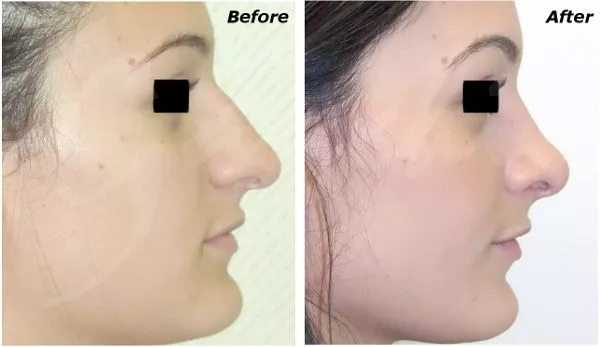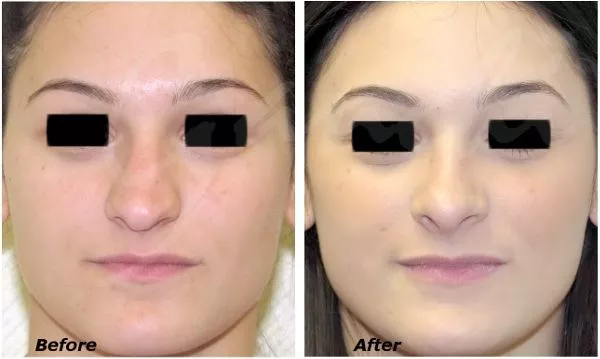Rhinoplasty is one of the most popular cosmetic plastic surgery procedures in the world. When performed by an expert plastic surgeon, the “nose job” can truly refine and beautify the whole face while enhancing breathing.
What is Rhinoplasty?
One of the most frequently requested plastic surgery procedures is nose surgery, also called a “nose job” or rhinoplasty. It’s amazing the difference this one change can make on your entire face. The right rhinoplasty will help your nose blend with the rest of your features and make all that’s most attractive about your face stand out.
What can Rhinoplasty Fix?
Rhinoplasty, or nose job, can correct a multitude of cosmetic and functional problems with the nose.
- Removing a hump or bump on the nose
- Filling in dents or dips in the bridge
- Straightening an irregular bridge
- Reducing or reshaping the nose tip
- Increasing or decreasing the size of the nostrils
- Correcting the overall size of the nose, making it bigger or smaller
- Returning proper function of the nose including repair of a deviated septum
- Repairing structure and appearance of the nose after accident or injury

Before-After – A beautiful nose that is in harmony with her face.
Nose Job Procedure
A rhinoplasty procedure can be done in a hospital or outpatient facility. The patient is prepped for surgery and given either a general anesthetic or sedation anesthesia. In the case of a minor change, a local anesthetic (numbing medicine) alone may be used.
Once the anesthetic has taken effect, the surgeon, using either the “closed rhinoplasty” technique or an “open rhinoplasty” approach, will surgically reshape the nose, removing, repositioning and reshaping bone and cartilage as needed. If the new nose needs additional mass or support, the surgeon may use cartilage from another place in your body, such as the septum, ears or even ribs. Bone grafting may also be required but is unusual. A rhinoplasty usually takes between one and two hours; longer for a more complex problem.
Nasal packs or splints might be placed inside the nostrils to stabilize the septum. After surgery, the plastic surgeon will likely place a metal or plastic splint on the nose to help it retain its shape during healing. After a period of rest and monitoring, the patient will be allowed to go home. If anesthesia is used, the patient will need a ride home and someone to stay with them for the first night.
The patient will need to rest with their head elevated above the chest. Splints and dressings must remain for at least a week or until the plastic surgeon says they can be removed.
While most patients will feel uncomfortable for the first few days after surgery, the vast majority of Dr. Ganchi’s patients will have no discomfort at all. He can provide not only the best result but the best recovery experience. Dr. Ganchi will offer advice on aftercare and minimizing any discomfort. He usually asks the patient to avoid the following activities for a few weeks after surgery:
- energetic tooth brushing
- swimming
- blowing the nose
- running
- sports and exercise
- facial expressions that require lots of movement (laughing, smiling, head nods)
- pulling clothes on over the head
- resting glasses on the nose
- eating foods that require a lot of chewing or taking big bites
- chewing gum
The patient should be careful about sun exposure. Too much sun could permanently discolor the skin around the nose.
Follow-up care is important after rhinoplasty. The patient must be sure to keep appointments and follow the plastic surgeon’s instructions.

Rhinoplasty – the crooked nose has been straightened, the tip refined and reduced for a harmonious result.
Functional Rhinoplasty
Although one usually thinks of a rhinoplasty or nose job as serving only a cosmetic purpose, rhinoplasty operations are frequently performed for functional or medical reasons as well.
Birth defects, accidents, and other injuries can result in marked deformity, broken bones, blocked airways causing difficulty breathing, or troubles with sleep. Any of these may be corrected with the proper use of rhinoplasty by a qualified and experienced plastic surgeon.
Non-Surgical Nose Job
An alternative to rhinoplasty surgery is the non-surgical nose job. Use of this minimally invasive technique has skyrocketed over the last ten years. Injectable fillers such as hyaluronic acid (Restylane, Juvederm, etc.) are used to optimize the shape of the nose.
A non-surgical nose job is used by plastic surgeons to correct many different aesthetically challenging situations. These can include additional alterations that need to be done after a primary or secondary (revision) surgical rhinoplasty.
A non-surgical rhinoplasty is non-invasive and is performed under local anesthetic. Although it cannot reduce the size of a patient’s nose, the sculpting with fillers can give the nose the appearance of being smaller as it’s made straighter and shaped to better fit the individual’s face. This non-surgical procedure is frequently used to augment precise areas of the nose, such as raising the height and definition of the nasal bridge.
Common reasons for performing a non-surgical rhinoplasty procedure:
- Smoothing a nasal hump or bump to give the perception of reduction
- Adding to the length and projection of the tip of the nose
- Augmenting a flat or dented nasal bridge
- Reducing the size of one or both nostrils
- Minor correction to a nose damaged from an accident or injury
- Correcting previously failed rhinoplasty
- Filling in a depression in the side of the nose or nostrils
- Shaping or enhancing any other projection or plane of the nose
How is a non-surgical rhinoplasty performed?
First, a local anesthetic is applied to the area of the nose. Next, the plastic surgeon performing a non-surgical rhinoplasty, injects tiny amounts of a dermal filler, such as Radiesse, Artefill, or Juvederm into the proper areas of the nose, depending on the correction being done. Bumps can be smoothed, nose bridges raised, nostrils made smaller, nose tips raised, the overall contours of the nose made more aesthetic.
The procedure usually takes less than half an hour. However, many situations take several appointments, at least 4 weeks apart, to gradually correct the problem and to gauge the final results of treatment.
What makes someone an ideal candidate for this procedure?
This type of nose job cannot make a nose smaller. However, this procedure could be the answer for the following situations:
- A patient wishes to smooth the appearance of bumps or humps on the nose
- The patient’s nose has dents, hollows, or indentations
- The nose is asymmetric
- The patient has a flat nasal bridge
- The tip of the patient’s nose is seen to droop or tip downward
- The patient is looking for additional minor changes after a surgical rhinoplasty
- The individual wants to de-emphasize a rounded nose tip
- Correct a “scooped out” appearance of the nose
We are frequently asked whether a non-surgical rhinoplasty will actually make a nose look bigger. It is, after all, being done by use of fillers. The answer is that a properly done non-surgical rhinoplasty, performed for the right reasons or situation, will not increase the appearance of size. In some cases, the actual goal of the procedure is to increase the size of the nose and this can be done also.
In general, by taking away irregularities and creating more symmetry, the nose actually looks smaller and more proportional to the face. The nose is a central focal point of a person’s face. When the symmetry of the nose is restored, it looks smaller and makes the face more beautiful. For instance, if you create a taller bridge, the nose looks thinner.
Rhinoplasty for Teens
An increasing number of teens (with the approval of their parents) are opting for rhinoplasty. Being a teenager is tough enough without having some obvious and correctable aesthetic challenge.
As long as both the teen and his or her parents understand the procedure and its risks, a correctly performed rhinoplasty can be a real life changer for a young person.
The procedure should not be done until the nose has reached its adult size. This is usually at the age of 14 or 15 for girls and about a year later for boys. A plastic surgeon will be able to tell if the teen’s’ nose has achieved its full growth.
Risks of Rhinoplasty
Every type of surgery comes with risks. These risks include infection, bleeding, or a bad reaction to anesthesia.
Rhinoplasty may also put you at risk for:
- problems with breathing through the nose
- nosebleeds
- a nose that stays numb
- an asymmetrical nose or other cosmetic problem
- scarring
If a patient is unhappy with the outcome of their rhinoplasty, they must wait until it is fully healed before seeking another operation. This takes a minimum of one year in most cases.
Rhinoplasty Options
Whether it’s nose surgery for a deviated septum, reconstructive nose surgery after an accident, a polypectomy or other such operation, Dr. Ganchi can perform a variety of surgical procedures to restore proper function to the nose. You can see descriptions of these procedures on our Rhinoplasty Options webpage.
Rhinoplasty Consultation
As with all cosmetic procedures, it’s important to understand what a non-surgical rhinoplasty or surgical rhinoplasty can do for you. A consultation with a board certified, highly trained and experienced top plastic surgeon will give you more information on these procedures and help you understand which is best for your situation.
